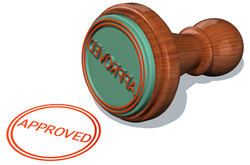OFHEO just released the temporary conforming loan limits (through 2008). It does not appear as though that every county that received an increase in FHA limits received one with conforming. Here is what I show for Washington State:
King, Pierce and Snohomish Counties
1 Family – $567,500
2 Family – $726,500
3 Family – $878,150
4 Family – $1,091,350
Kitsap County
1 Family – $475,000
2 Family – $608,100
3 Family – $735,050
4 Family – $913,450
Clark and Skamania Counties
1 Family – $418,750
2 Family – $536,050
3 Family – $648,000
4 Family – $805,300
San Juan County
1 Family – $593,750
2 Family – $760,100
3 Family – $918,800
4 Family – $1,141,850
Jefferson County
1 Family – $437,500
2 Family – $560,050
3 Family – $677,000
4 Family – $841,350
This data is still very new and I’m just making it available to you as soon as I receive it. More information will follow.













Recent Comments